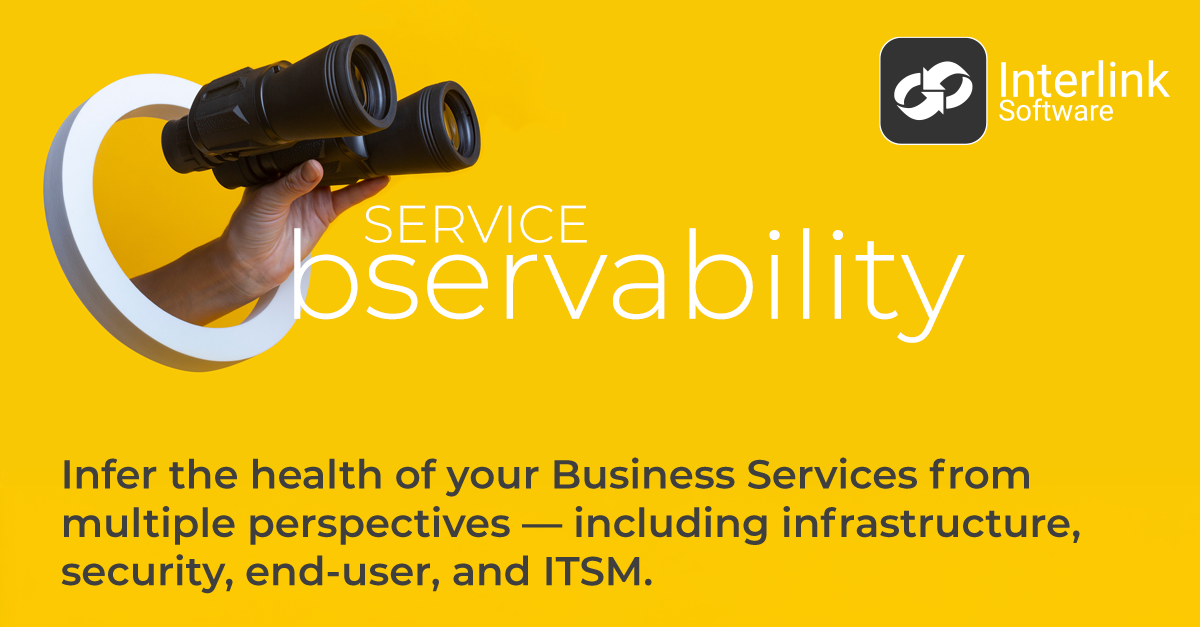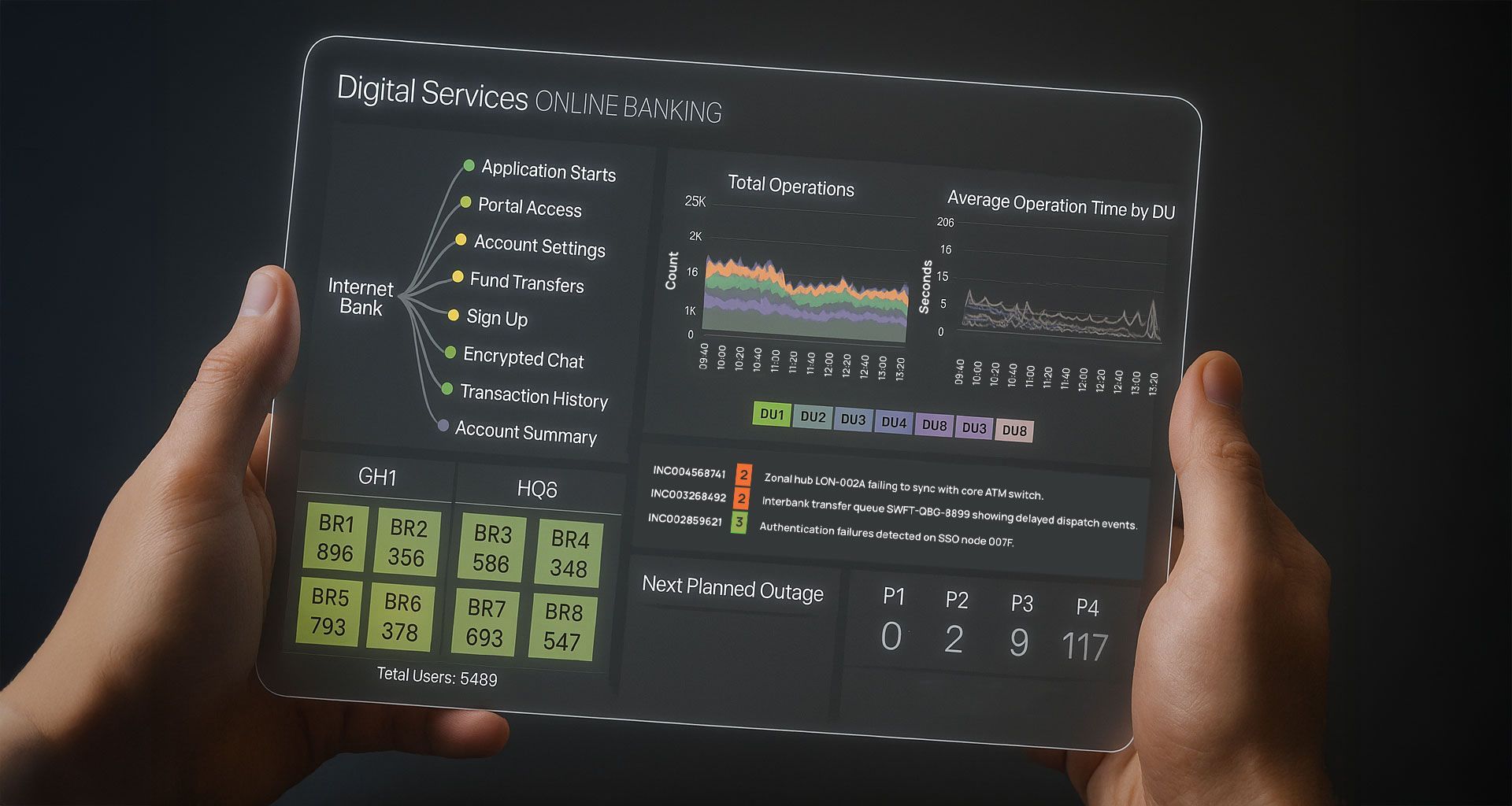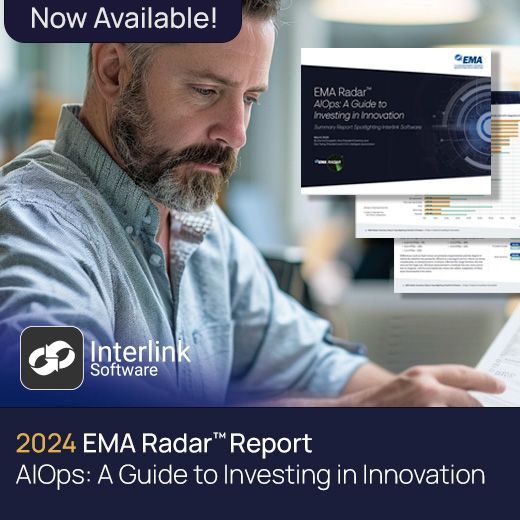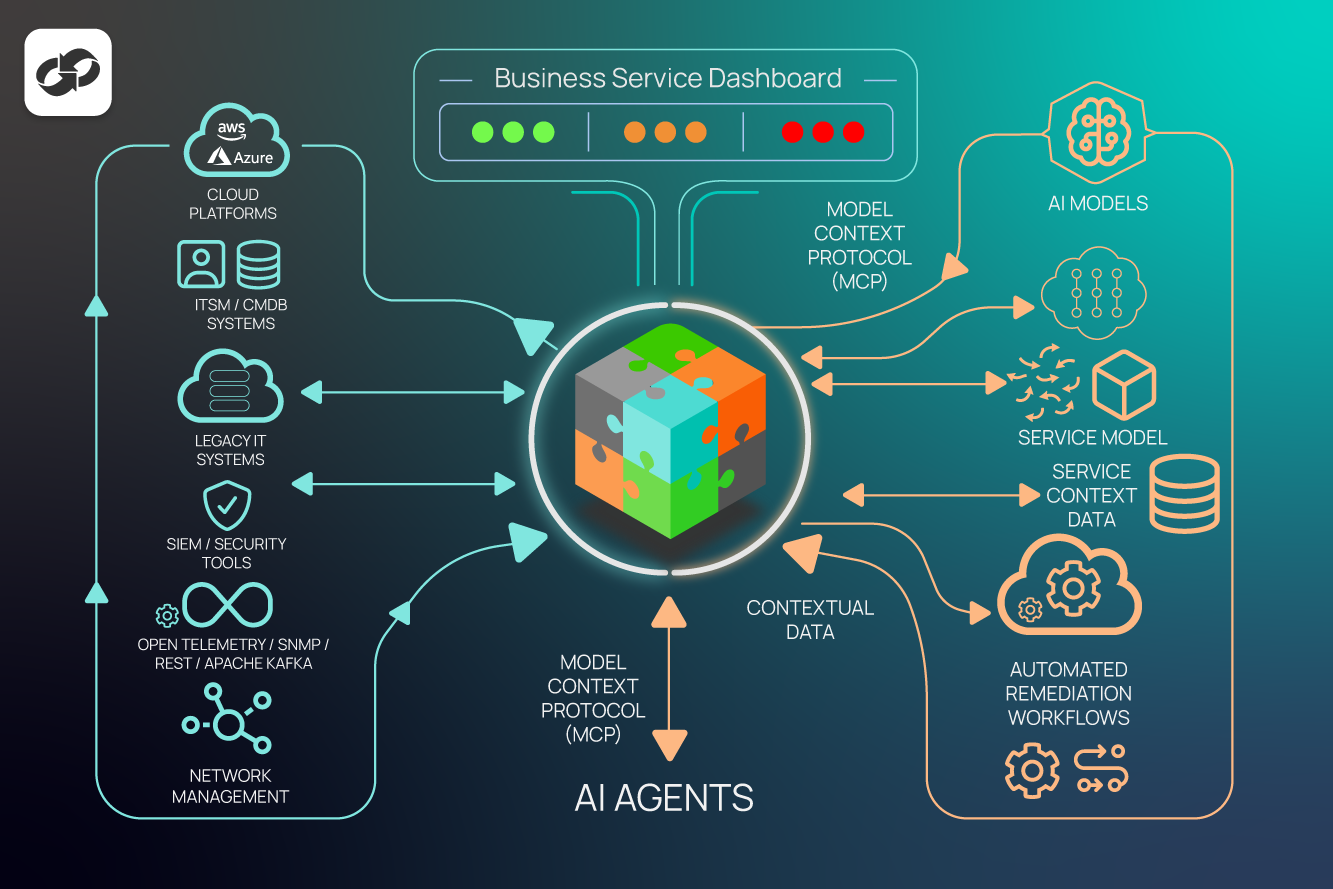Service Observability, Service Operations and Service Orchestration: Unifying Visibility and Action Across the Enterprise
For large enterprises, the health and resilience of Business Services define customer experience and business reputation. Yet as technology estates grow in complexity, fragmented toolsets and siloed teams make it difficult to maintain service availability and prevent incidents before they impact the business and ultimately, customers.

Interlink Software’s AIOps-powered platform delivers a unified approach that brings together Service Observability, Service Operations and Service Orchestration. These three capabilities work in concert to help organizations protect service availability, maintain performance and align IT Operations with business outcomes.
Service Observability gives enterprises a real-time view of Business Service health from multiple perspectives, including infrastructure, application, end-user and ITSM data. By correlating technical signals with business context, the platform reveals how incidents, performance issues or capacity constraints affect customer-facing services. This enables IT Operations teams to prioritize response and resolution in business terms and prevent service degradation before it impacts users.
Service Operations transforms traditional, reactive IT Operations into a proactive, intelligent function. Interlink’s
Event Intelligence capability consolidates millions of monitoring events and log messages into a single, clear operational view. Using machine learning, natural language processing and knowledge graphs, it identifies patterns, correlations and likely root causes across complex, distributed environments. This insight helps organizations reduce incidents by typically around 50% and cut Mean Time to Resolution through automated root cause analysis and intelligent escalation.
Service Orchestration closes the loop by automating the response. Interlink's workflow automation engine connects detection to resolution through policy-based orchestration. Low-code automation design allows IT and business teams to trigger remediation workflows directly from service impact dashboards, ensuring issues are resolved in business priority order. Integration with LLMs, Agentic AI, ITSM tools, event management systems and collaboration platforms ensures that information, context and actions flow seamlessly across teams.
What sets Interlink apart is the depth of its integration and the strength of its architecture. The platform brings together observability data from across hybrid, on-premises, and cloud environments through flexible integration options, including OpenTelemetry, REST APIs, Webhooks, SNMP, and more. Its Service Chain Mapping capability provides real-time visibility of dependencies across customer journeys, ensuring teams can| trace and resolve service-impacting issues rapidly
By combining Service Observability, Service Operations and Service Orchestration in one AIOps-powered platform, Interlink Software enables enterprises to predict, prevent and resolve incidents faster. The result is greater service availability, higher operational efficiency and improved alignment between IT and the business it supports.
Contact Interlink to discuss your Service Observability needs.

From Monitoring to Meaning: Why Service Observability Platforms Are Essential for Modern Enterprises

What is Single Pane of Glass Monitoring and How Can Enterprises Leverage It for Enhanced Visibility?















